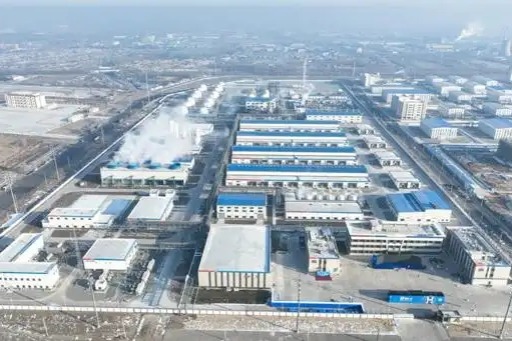HELPING HANDS SOLVE MEDICAL WASTE PROBLEM
Offers of assistance relieve burden in Wuhan

Editor's note: Novel coronavirus pneumonia is posing a worldwide threat. Here, we take a look at how China is playing its role in the global fight against the outbreak by mobilizing a vast amount of resources to contain the epidemic. This is the fourth part of a series titled "United Actions".
Gong Shunguang, who is responsible for managing the temporary storage of medical waste at a hospital in the epicenter of the novel coronavirus pneumonia outbreak, has been overburdened in recent weeks.
He has seen a sharp increase in the amount of such waste collected from the wards at Wuhan No 1 Hospital in Hubei province since early last month, when it became a designated facility for treating critically ill patients infected with the virus.
Gong said the quantity of medical waste generated at the hospital had risen from less than 1.7 metric tons a day before the outbreak to about 4 tons a day.
Due to the epidemic, he said he is now more careful when moving containers of waste to avoid health risks and potential environmental hazards.
The hospital is one of 48 medical facilities designated to treat infected patients in Wuhan, the city hardest hit by the epidemic. An additional 16 temporary hospitals were set up in conference halls and sports stadiums in the city.
As of Sunday, 49,948 confirmed cases had been reported in the city, accounting for over 60 percent of the total on the Chinese mainland.
No official statistics have been made available for the amount of medical waste generated daily by the city's healthcare facilities since the start of outbreak. However, insiders estimate that the figure has risen by at least twofold.
Yang Fan, general manager at Wuhan Hanshi Environmental Engineering Co, the only company authorized to dispose of medical waste in the city, said his business faced huge challenges from Jan 10 to the middle of last month, as the amount of waste from hospitals exceeded the company's treatment capacity.
He said the company has a daily disposal capacity of 50 metric tons-sufficient to fully meet demand before the contagion hit the city.
In 2018, Wuhan disposed of 17,300 tons of waste generated in its medical facilities, according to a document released by the city's ecology and environment bureau.
In addition to the sharp rise in quantity, the composition of medical waste is now different to before the outbreak, Yang said.
Such waste usually includes a broad range of items, from used needles and syringes to soiled dressings, body parts, diagnostic samples, blood, chemicals, pharmaceuticals, medical devices and radioactive materials, according to the classification catalogue of medical waste jointly released by the National Health Commission and the Ministry of Ecology and Environment.
Due to the contagion, hospitals now categorize all waste from wards as medical waste, including face masks, protective clothing, goggles, and plates, bowls and cups used by patients, Yang said.
"That means the volume and weight of medical waste increase, requiring bigger containers and vehicles to transfer the waste from hospitals to our disposal plant," he said.
As medical waste is always collected by covered trucks for safety reasons, Yang said his company's transportation capacity failed to match demand after the outbreak.
To solve the problem, he mobilized workers and vehicles from the company's disposal plants in Liaoning and Shandong provinces. More than 120 employees have been working in shifts since the epidemic emerged.
"We work 10 to 12 hours every day," Yang said, "Everybody knows they are very close to infections, but no one has backed off. I'm grateful to my 'brothers'."
To safeguard workers and avoid the risk of infection, the company has taken rigorous measures, such as enhancing training for employees and increasing disinfection.
In the middle of last month, the situation improved as authorities in Wuhan deployed more resources to help the company with disposal work, and new facilities were set up to increase the total disposal capacity, Yang said.
Beihu Yunfeng Environmental Technologies Co, whose main business is industrial waste disposal, joined with Yang's company last month to help treat medical waste. General manager Mei Gang said the business has a disposal capacity of 15 tons a day.
"When the city's environmental authority approached me for help, I immediately agreed. However, I was worried that my employees might refuse to do such work, as their job is to dispose of industrial waste, not medical waste that might cause them to become infected," he said.
When Mei spoke to the workers about his decision, he breathed a huge sigh of relief when many offered their services voluntarily.
"We have hundreds of reasons for not doing the work, but we have only one reason for doing it-we are Wuhan citizens," Mei said. "The city has become ill. If we don't offer to save it, who can it depend on? We should do what we can, and make our contribution in the fight against the epidemic."
Mei provides his workers with top-quality equipment to protect them from possible infection and also isolates them in single rooms, where they are provided with food, to avoid the risk of disease transmission.
"More than one month has passed. To date, no one has become infected, thanks to the strengthened protection," he said.
Since Jan 30, Wang Chunshan, chairman of Hubei Zhongyou Youyi Environmental Protection Technology Co, in Xiangyang, Hubei, about 350 kilometers from Wuhan, has organized 85 employees and 40 vehicles to help the provincial capital dispose of medical waste.
Wang's company is just one of those outside Wuhan to offer assistance.
After returning to Xiangyang from Wuhan on Feb 15, Wang used the company's website to post an article he wrote, sharing his thoughts on the epidemic with his employees.
"As we can see, the outbreak is effectively being brought under control as the result of tireless efforts by many people who are fighting the battle on the frontline, particularly thousands of medics from around the country who are racing against time to save lives," Wang wrote.
He praised his employees' work as volunteers to help Wuhan out of difficulties, and said their dedication, like that of the countless medical workers, would help the city return to normal at an early date.
The arrival of more assistance and support has greatly eased the burden Wuhan faced in disposing of medical waste. As of Feb 24, the city's daily disposal capacity for such waste was 262.8 metric tons, according to the Ministry of Ecology and Environment.
Liu Zhigang, director of the infections management office at Wuhan No.1 Hospital, focuses on safety in the process of collecting, storing and transferring medical waste.
"Such waste can harm people's health, especially when reinfection and environmental pollution occur as a result of improper handling," Liu said.
He added that as novel coronavirus pneumonia is spread via airborne droplets, there is the possibility that it might also be easily transmitted through physical contact. "As a result, we must take measures to manage medical waste to ensure there is no chance of spreading the virus," he said.
Medical waste is usually placed in plastic bags, which are then tightly bound and put in covered containers. Before being transported to a temporary storage site, the containers are disinfected. Later, they are taken to the waste disposal plant, where they are disinfected again, Liu said.
"In every stage of the procedure-collection, storage and transfer-we use intelligent equipment to track the weight of the waste, where it has come from and the person in charge of each part of the process," he said.
Liu added that as the virus is highly contagious, medical facilities have to be 100 percent certain that once waste is discharged from wards, proper treatment measures are taken to avoid the risk of transmission.
Wuhan has not been alone in facing problems with medical waste disposal, with 54 other cities encountering such a challenge, according to the Ministry of Ecology and Environment.
On Feb 21, a meeting of the Political Bureau of the Communist Party of China Central Committee underscored the need to step up efforts to strengthen facilities for the collection and disposal of medical and hazardous waste.
Five days later, 10 central government bodies, including the National Health Commission, the Ministry of Ecology and Environment, and the National Development and Reform Commission, unveiled a plan for the management of medical waste and called for the construction of dedicated disposal facilities to be stepped up nationwide.
According to a document released after the meeting, at least one facility for the "concentrated disposal" of medical waste must be built in cities at and above prefectural level by the end of this year. It added that by mid-2022, a system for medical waste collection, transportation and disposal must be established in each county in the country.
According to observers, the outbreak will help spur the development of the medical waste treatment sector.
In a recent report, market researcher CCID Consulting said that due to the epidemic, China's medical waste treatment sector could expand by as much as 15 percent this year to 6.7 billion yuan ($956 million).
The report said the outbreak has made people more concerned about the treatment of medical waste, and with the increased use of protective gear, sales of waste disposal equipment will grow by about 20 percent to 8.5 billion yuan by the end of 2022.

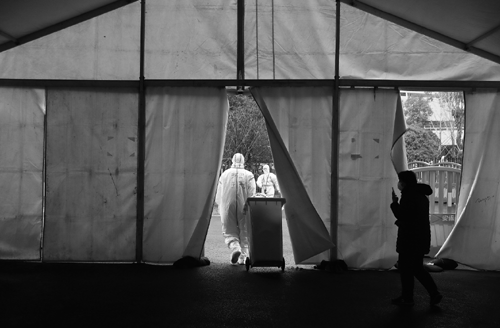
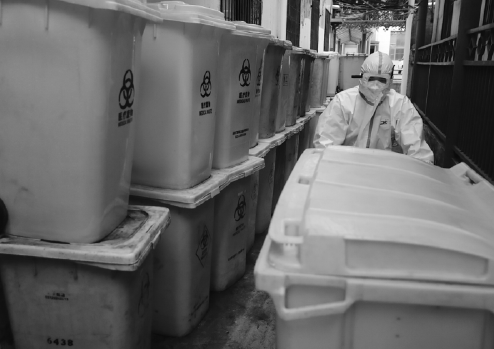
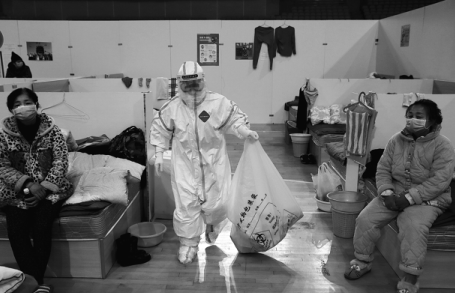

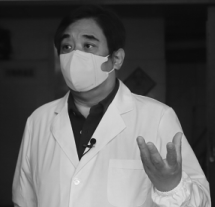
Today's Top News
- China warns about Japan's intended military buildup
- China urges EU to halt anti-subsidy probes
- Experts: Lai not freedom fighter, but a pawn of the West
- Hainan evolves as gateway to global markets
- Opening up a new bridge between China and world
- Tour gives China-Arab strategic trust a boost






















